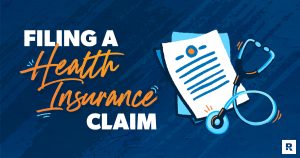Our writers and editors used an in-house natural language generation platform to assist with portions of this article, allowing them to focus on adding information that is uniquely helpful. The article was reviewed, fact-checked and edited by our editorial staff prior to publication.
If you’re financing a home purchase, understanding mortgage terminology is essential. But becoming fluent can feel a bit like learning a new language. To help, here’s our guide to some key mortgage-related terms — from A(PR) to V(A loans) — to demystify the fine art of home-loan financing.
Key mortgage terms
Adjustable-rate mortgage (ARM)
An adjustable-rate mortgage is one in which the interest rate on the loan changes at a predetermined time, as often as every six months. There is typically an initial “teaser” period when the interest rate is especially low — even lower than that of a fixed-rate mortgage. After that, your rate can go either up or down based on market conditions.
Amortization
Amortization describes the process of repaying a loan, such as a mortgage, in installment payments over a set term. Part of each payment goes toward the principal (the amount borrowed), while the other portion goes toward interest. A typical home loan might amortize over a 15- or 30-year term, with the amount allocated to interest and principal decreasing and increasing, respectively, over time. When a loan is fully amortized, or mature, that means it’s been paid off entirely by the end of its amortization schedule.
APR
APR, or annual percentage rate, reflects the cost of borrowing a mortgage. A broader measure than the interest rate alone, the APR includes the interest rate, discount points and other fees associated with the loan. The APR is higher than the interest rate and a better gauge of the true cost of the loan.
Balloon mortgage
Balloon mortgages are short-term home loans, often spanning five to seven years. With these non-qualified loans-(see Non-QM loan below), borrowers make relatively small monthly payments for a set time period. Then, at the end of the loan term, they settle the remaining balance in a single lump sum: Their payment suddenly balloons (hence the name). This payment could amount to quite a large sum, making them quite risky.
Cash-out refinance
A cash-out refinance is a type of mortgage that allows you to access some of your home’s equity in a lump sum. The process involves taking out a second, larger mortgage to replace your first mortgage. The new loan includes the outstanding balance of the first mortgage plus the cash you’re withdrawing, and comes with a new interest rate and term.
Closing costs
Closing costs are fees associated with getting a mortgage. They include several expenses paid at the time of the loan signing, or closing, such as an origination fee, appraisal fee, credit report fee and title search fee. Both homebuyers and sellers incur closing costs; more of them often fall to the buyer, but sometimes sellers cover some of those costs.
Conforming loan
A conforming loan is a mortgage that meets the guidelines and loan limits set by the Federal Housing Finance Agency (FHFA). The guidelines include criteria for the borrower’s creditworthiness, debt-to-income ratio and down payment. The loan limits, which change annually and vary by county, dictate the maximum loan that government-sponsored enterprises (GSEs) Fannie Mae and Freddie Mac are willing to purchase or to back. By conforming to these guidelines, lenders can sell these loans to Fannie Mae and Freddie Mac, reducing their risk and enabling them to offer better terms to borrowers.
$766,550
The 2024 maximum conforming loan limit in most parts of the U.S. For high-cost real estate areas, it can be as high as $1,149,825.
Source:
Federal Housing Finance Agency
Construction loan
Construction loans are a type of short-term financing, usually with a one-year term, used for the specific purpose of building a home. With this type of loan, you withdraw money at predetermined stages of your project. There are two main types of construction loans: construction-only and construction-to-permanent. A construction-only loan must be paid off when the home is finished (or rolled over into a traditional mortgage). A construction-to-permanent loan changes into a mortgage when the home is completed.
Conventional loan
A conventional loan is any mortgage not backed by the government; it is financed entirely by the private sector. Unlike FHA, VA and USDA loans, which are insured or guaranteed by federal agencies, a conventional loan is backed by the lender issuing it. Conventional loans traditionally required a 20 percent down payment; some now take less but often charge private mortgage insurance (PMI).
Debt-to-income (DTI) ratio
Debt-to-income (DTI) ratio is a measure of a borrower’s ability to repay a mortgage, and is calculated by adding up all of the borrower’s monthly debt payments and dividing the total by the borrower’s gross monthly income. For example, if a borrower’s debt payments total $4,000 a month and their gross monthly income is $10,000, their DTI ratio would be 40 percent.
Down payment
A down payment is the amount of a home’s purchase price a homebuyer pays upfront in cash. A larger down payment can help improve a borrower’s chances of getting a lower interest rate. Different kinds of mortgages have varying minimum down payments.
Earnest money
Earnest money is a deposit a homebuyer makes when entering into a purchase and sale agreement (PSA) for a home, generally as a sign of good-faith intent. The deposit is typically held by a title company in an escrow account. When the home sale closes, the earnest money goes toward the down payment or closing costs. If the sale falls through, the deposit either goes back to the buyer or the seller, depending on whether the reason for termination was permitted in the PSA.
Equity
Equity is the percentage of your home that you own outright. It represents the portion of your home that’s paid off (and/or that you paid for directly, via your down payment). If a home is valued at $300,000 and your mortgage balance is $100,000, for example, your equity is $200,000. You can borrow against your home equity for ready cash.
Escrow
An escrow account — also called an impound account — holds the portion of a borrower’s monthly mortgage payment slated for homeowners insurance premiums and property taxes. Escrow accounts also hold any earnest money the buyer deposits between the time their offer has been accepted and the closing. An escrow account for insurance and taxes is usually set up by the mortgage lender or servicer, which makes the insurance and tax payments on the borrower’s behalf. This system assures the lender that those bills get paid.
FHA loan
FHA loans are mortgages insured by the Federal Housing Administration (FHA). That means the FHA is backing them; should you default, it’ll repay the lender — thereby reducing the lender’s risk. As a result, FHA loans often have more lenient credit requirements and lower down payments than conventional loans; they’re especially popular with first-time homebuyers.
Fixed-rate mortgage
A fixed-rate mortgage is a loan that carries the same interest rate for the entire repayment term (life of the loan) — in contrast to an adjustable-rate mortgage, which has an interest rate that fluctuates based on market conditions. Borrowers can only change the interest rate on a fixed-rate mortgage by refinancing it.
Forbearance
Forbearance refers to a short pause on mortgage payments, typically because of financial hardship. Once the forbearance period is over, homeowners can either repay the missed payments in a lump sum, enter a repayment plan or request a loan modification.
Foreclosure
Foreclosure happens if a homeowner stops making payments on their mortgage; this default allows the lender to take possession of the home, as it acted as collateral for the loan. Foreclosure allows a mortgage lender to sell the home and recoup the money it’s owed.
Homeowners insurance
Homeowners insurance is coverage that protects a policyholder’s home and personal belongings in the event of an unforeseen damaging or destructive event (fire, hurricane, etc.) or theft. Besides restoring the residential property — which can also include detached structures like garages, sheds or pool houses — homeowners insurance also covers liability for injuries to individuals or their belongings when they’re on the property. While homeowners insurance is not required by law, lenders typically demand borrowers obtain it as a condition of a mortgage.
Interest rate
A loan’s interest rate represents what the lender is charging someone to borrow money. It’s expressed as a percentage applied to every mortgage payment. The interest rate a lender charges reflects general market movements, but also the degree of risk the borrower represents. Short-term loans often carry lower interest rates than long-term ones (since the lender is getting its money back sooner) and people with better credit scores are typically eligible for lower interest rates than applicants with a challenged credit history.
Jumbo loan
A jumbo loan is a mortgage geared towards larger and/or more expensive properties. Jumbo loan amounts are higher than the general federally set standards for mortgages, known as the “conforming loan limits.” Most mortgages fall within these annually adjusted conforming limits, meaning banks are only allowed to lend a certain amount based on the geographic region where the home is located. For most of the U.S, $766,550 is the limit; in the most expensive areas, the limit for a conforming loan is $1,149,825 (in 2024). If you need more money than that, you’ll require a jumbo loan.
Loan estimate
A loan estimate is a three-page document containing details about a mortgage. Given to a potential borrower within days of their application, it includes estimates of the loan’s interest rate, monthly payment and the total closing costs, and also escrow charges, prepayment penalties and other pertinent expenses. The loan estimate is designed to make it easier for borrowers to compare terms when shopping for a mortgage, as all lenders use the same standardized form. Receiving one does not mean they’ve been approved or denied for the loan.
Loan-to-value (LTV) ratio
The loan-to-value ratio, or LTV ratio, compares the mortgage amount against the property’s value. An LTV ratio of 80 percent or less — which corresponds to a 20 percent down payment — has been the traditional benchmark for conventional loans; an LTV ratio above 80 percent means you’ll need to purchase mortgage insurance, an extra expense. Some government mortgages, such as FHA or VA loans, permit higher LTV ratios, and may or may not come with the mortgage insurance requirement.
Mortgage broker
A mortgage broker is an intermediary who matches prospective buyers with mortgage lenders, including banks, credit unions and other financial institutions. Buyers often seek the assistance of mortgage brokers to find the best loan for their situation and lowest rates available. Working with a mortgage broker can simplify the process of shopping for and comparing loan offers. Besides helping homebuyers find mortgages, brokers often interact with all parties involved in the lending process to ensure that the application is filled and filed correctly, and that loans close on time.
Mortgage insurance
Mortgage insurance is typically required on home loans where the buyer makes a less-than-20 percent down payment. The premiums are paid by the borrower, usually as part of their monthly mortgage repayment. This extra charge acts as protection for the lender in the event that you default on your loan, helping it recoup its funds. There are two basic types: private mortgage insurance (PMI), imposed on conventional loans, and mortgage insurance premiums (MIP) on FHA loans.
Non-QM loan
A non-QM loan (short for non-qualifying or non-qualified mortgage) is a type of mortgage that doesn’t meet standards established by the Consumer Financial Protection Bureau (CFPB). These loans are designed to provide financing options for borrowers who may not meet the traditional income, financial or creditworthiness criteria, but can still demonstrate the ability to repay a mortgage through alternative means. Since non-QM loans present a higher level of risk for lenders, they often come with different terms and conditions and higher interest rates than standard mortgages.
Notice of default
A notice of default is a formal document that a lender files with the courts when a borrower is behind on their monthly mortgage payments. This document typically includes the borrower’s name, address, lender’s name and information about the mortgage loan. A notice of default is generally a precursor to foreclosure, the first step in the process to seize a home.
Origination fee
An origination fee is charged by a lender for initiating, processing and/or underwriting your loan. In most cases, the origination fee on a mortgage is between 0.5 and 1 percent of the total loan amount and must be paid at the time of closing.
PITI
PITI is an acronym for the four major parts of a mortgage payment: principal, interest, taxes and insurance. The first two are the portion of your payment that covers principal, or the amount borrowed, and interes, both of which go to the lender as repayment for the loan. Another portion covers property taxes and homeowners insurance premiums, and typically goes into an escrow account.
Points
Borrowers can purchase discount points, aka mortgage points, to lower the interest rate on their loan. Typically, one point costs 1 percent of the loan amount and lowers the rate by 0.25 percent (though it can vary by lender). The cost of points is included in the loan estimate, and the borrower pays for them at closing. In general, borrowers buy points to cut interest over the life of the loan, so buying them might only be worthwhile if the borrower stays in the home long enough to offset the upfront cost.
Preapproval
Preapproval is a status a borrower receives from a mortgage lender, indicating it is willing to provide a specific amount of money to buy a home. It doesn’t mean the borrower is guaranteed a loan, but it demonstrates that they are in a strong position to get financing (which they can demonstrate to sellers in the form of a mortgage commitment letter). It is issued after a lender conducts a credit check and gathers some financial information about the borrower.
Prequalification
Prequalifying for a mortgage involves sharing some basic personal information with a lender; in exchange, the lender gives the prospective borrower an estimated loan amount and rate. The prequalification process is less involved than the preapproval process, and getting prequalified does not guarantee a borrower will be approved for a certain loan amount or rate. In short, there’s no commitment on the lender’s side. Prequalifying typically involves a soft credit check and requires no formal application.
Principal
Mortgage principal is the amount you originally borrowed from the bank or lender — your loan amount. Interest, by comparison, is what the lender is charging you to borrow the money. A monthly mortgage payment consists of both principal and interest payments.
Private mortgage insurance (PMI)
Private mortgage insurance (PMI), is a type of coverage a borrower is required to purchase if their down payment is less than 20 percent for a conventional loan. PMI protects the lender — not the borrower — from loss if the borrower stops making payments on the loan. When refinancing, PMI is required if the borrower’s home equity is less than 20 percent of the property’s value.
Rate lock
Interest rates change rapidly, and a rate lock helps ensure a borrower’s mortgage rate doesn’t change from initial application to closing. This lock helps protect borrowers if interest rates increase. Lenders lock rates on mortgages for a set period, often 30 to 120 days. The time frame varies by lender.
Refinance
Borrowers who already have a mortgage can refinance to a new loan with a different rate, term or both, using the new one to pay off the existing one. Borrowers don’t have to refinance with the same lender that holds their current mortgage.
One common reason for refinancing is to obtain a lower interest rate, usually because economic factors have driven rates lower or the borrower’s credit has improved. Borrowers may also refinance to shorten their loan term, pay off the mortgage faster and lower the total interest paid overall.
Reverse mortgage
Reverse mortgages are available to homeowners of a certain age (generally, at least 62 years old, though as young as 55 years with some loans) who’ve paid off all or most of their mortgages. Under this arrangement, a lender pays the homeowner each month. The homeowner is borrowing against their equity, in cash; the payments are tax-free and can be interest-free as well (that is, the borrower doesn’t have to make any payments towards it during their lifetime). When the borrower dies, sells or permanently leaves the home, the lender is repaid or takes possession of the property.
Short sale
With a short sale, a lender permits a borrower to sell their property for less than their outstanding mortgage balance. The lender then forgives the difference between the original loan and the home’s sale price. Borrowers who are significantly underwater on their homes (that is, owe more on them than they’re worth) might opt for a short sale to avoid foreclosure. However, this action can adversely affect a borrower’s credit for several years.
Title insurance
Title insurance protects both homebuyers and mortgage lenders: It can safeguard them against unexpected issues, such as ownership disputes, liens and other legal claims resulting from a previous owner’s actions. In the event of a dispute arising during or after a sale, the title insurance company may be liable for covering specified legal damages. Lenders often require title insurance as a condition of issuing a mortgage to a borrower.
Underwriting
Mortgage underwriting is the process by which a bank or mortgage lender assesses the risk they would be taking by lending to a given borrower. The underwriting process takes into account factors like the borrower’s credit report and score, income, debt and the value of the property they intend to buy. Many lenders follow standard underwriting guidelines from Fannie Mae and Freddie Mac when determining whether to approve a loan.
USDA loan
USDA loans (aka rural development loans) are offered to people willing to buy homes in certain bucolic areas. Issued by private lenders, they are guaranteed by the U.S. Department of Agriculture. They offer generous terms — they don’t require a down payment, for example — but applicants must be low- or moderate-income.
VA loan
VA loans are guaranteed by the U.S. Department of Veteran Affairs. Both active-duty and veteran military members, as well as surviving spouses, are eligible to apply. VA loans are appealing because they don’t require a down payment, have no loan limits and can be 100-percent financed (assuming the borrower has full entitlement).
Additional reporting by Jess Ullrich
Read the full article here
















